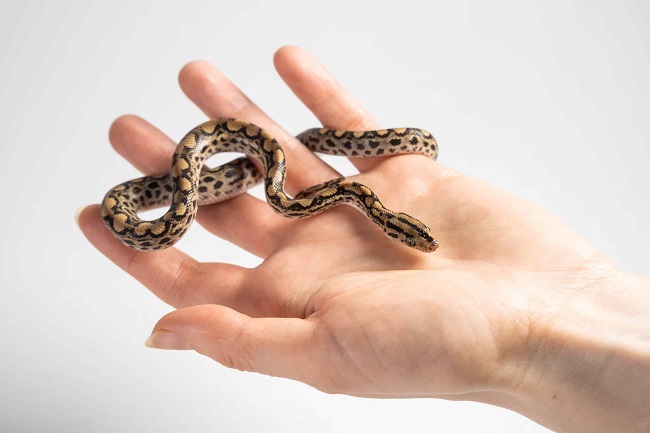Small snakes make for fascinating pets. They offer an exotic alternative to traditional pets, and their care routines provide an interesting dive into the world of reptile keeping.
This comprehensive guide will discuss various small snake breeds suitable for pets, their care needs, and essential tips for first-time snake owners.

Why Small Snakes Make Good Pets
Small snakes are popular pets due to their manageable size, minimal space requirements, and generally docile nature. They are also quite low-maintenance compared to many other pets, requiring less daily care.
Read Also:
However, like any pet, they still need attentive care, including appropriate habitat, diet, and regular check-ups.
Corn Snake
Corn snakes are one of the best choices for novice snake owners. They stay relatively small, generally reaching lengths of 2-5 feet. Corn snakes have a docile nature and are known for their vibrant color patterns. They feed on a diet primarily of mice.
Ball Python
Ball pythons, also known as royal pythons, are known for their calm demeanor and modest size. They typically grow between 2-5 feet long.
Their diet consists primarily of rodents. These snakes are famous for the wide variety of color and pattern morphs available.
Kenyan Sand Boa
Kenyan sand boas are small, heavy-bodied snakes, with females reaching lengths of up to 2 feet and males being significantly smaller.
Their diet consists of small rodents. These snakes are burrowers and require a substrate in their enclosure that allows for this natural behavior.
Western Hognose Snake
Western Hognose snakes are small, stout snakes known for their upturned snout. They rarely exceed 2 feet in length, making them excellent pets for those looking for smaller snake species.
They feed primarily on amphibians and rodents. These snakes are popular due to their easy care, manageable size, and the wide variety of available color morphs.
Rosy Boa
Rosy Boas are one of the smallest boa species, typically reaching only 2-3 feet in length. They have a calm demeanor and are known for their beautiful color patterns that vary significantly depending on the geographic region they come from. Rosy Boas feed on small rodents and have relatively straightforward care requirements.
Milk Snake
Milk Snakes are known for their vibrant, contrasting color patterns. They’re often mistaken for the venomous Coral Snake, but unlike their venomous doppelganger, Milk Snakes are harmless and make excellent pets.
Depending on the specific subspecies, they usually range from 2-5 feet in length. Milk Snakes are primarily rodent eaters.
Garter Snake
Garter snakes are small, active snakes that are well-suited to captivity. They typically reach lengths of 2-3 feet. While most snakes are strictly carnivorous, Garter snakes have a more varied diet and can eat fish and amphibians in addition to rodents.
Their care can be a bit more complex due to their active nature and dietary needs, so they’re often recommended for intermediate snake owners.
Snake Habitats: Creating a Comfortable Environment
Creating a comfortable habitat is essential for keeping a snake healthy and content. The enclosure should have ample space, appropriate heating and lighting, and hiding spots for the snake to retreat. It should also have a substrate suitable for the snake species.
Feeding Your Small Snake
Feeding practices vary among snake species, but most small snakes primarily feed on rodents. The size of the prey item should correspond with the size of the snake. Always have fresh water available in the enclosure.
Regular Check-ups and Health Concerns
Regular vet check-ups are crucial to ensure your snake is in good health. Common health concerns include respiratory infections, mites, and parasites. Early detection is key to effective treatment.
Read Also:
Conclusion
Keeping small snakes as pets can be a rewarding experience, offering owners a unique insight into these fascinating creatures.
However, it’s essential to remember that, like all pets, snakes require dedicated care, attention, and commitment. With the right knowledge and preparation, you can provide a loving home for these intriguing pets.
























